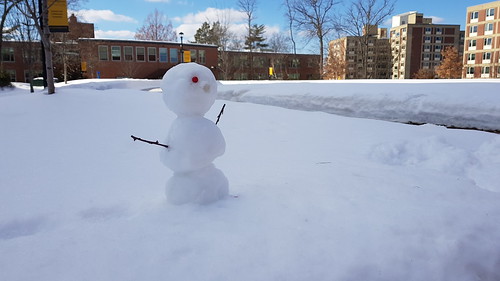February is hard. Years ago, I repeated Jo(e)’s claim that February is the longest month, and she is exactly right. Come February, the novelty of winter has long worn off. The snow is cleared from streets and sidewalks after each storm, but it piles and ossifies in yards and corners. Our dog pen is as slick as a rink, with weeks of snow trampled and saturated with last week’s sleet, then frozen hard: snow covering ice layered atop treachery.
The daily winter drill is now familiar and mundane. The piling on of coats and hats and gloves, then the pulling on of boots: it takes so much effort to take the trash to the curb, the dog to the pen, one’s own self to the car. Along with any obligation, there are these extra intervening steps: almost inconceivable are those summer days when stepping outside was as simple as slipping on sandals.
By February, winter has grown old, a tired routine that wears thin. And this year, we are in the February of the pandemic: a crisis that has lingered so long, it seems almost unremarkable. Last March, the governor declared a state of emergency, back when the pandemic was newly emergent. Nearly a year later, I no longer know if any given day is an emergency or merely life as we now know it. After nearly a year of being vigilant for viruses, our perpetual state of high alert is almost mind-numbing: an old ordinary that dulls more than sharpens.
In the early days of the pandemic, J and I kept a calendar count of our stay-at-home days. A quarantine is defined as forty days of isolation, but now we’re approaching a full year of deprivation: not socializing in-person with friends, not eating in restaurants, not shopping inside stores, not traveling or attending events. J and I no longer count our stay-at-home days; instead, we’re counting down until late April, when we hope to be eligible for the COVID vaccine–the closest thing to Spring we can hope for in these interminable pandemic days.

February 2021
Feb 19, 2021
The closest thing to spring
Posted by Lorianne under In a humdrum, Life in the time of Coronavirus | Tags: doldrums, quarantine |Leave a Comment
Feb 15, 2021
Without peer
Posted by Lorianne under Life in the time of Coronavirus, Teaching & learning[2] Comments
Several weeks ago, while waiting to check-in on campus for my weekly COVID-19 test, I saw a teaching colleague leaving after taking her own test. I called her name, we exchanged pleasantries from a safe distance, and she left: the kind of passing interaction we used to have frequently in the Before Times. Only afterward did I realize it was the first time I’d seen a teaching colleague in person in nearly a year.
When colleges across the country went virtual last March (and again when colleges re-opened in various hybrid formats this past Fall), parents and pundits alike wondered how the pandemic would impact the social lives of students. Would 18- to 21-year-olds be deprived of the Typical College Experience in an era where masks, social distancing, and frequent COVID tests are the norm? Nowhere in this conversation did anyone ask what it would be like for college instructors teaching in the Age of Coronavirus. How exactly would college professors cultivate collegiality in the absence of in-person colleagues?
At both of the colleges where I teach, department chairs and other administrators have tried to maintain a semblance of bureaucratic normalcy with department meetings, committee work, and conversational coffee hours happening online. But gone are the days of running into your colleagues in the copy room, chatting around the department water cooler, or mingling in the hallways.
At both of the colleges where I teach, students are finding ways to interact and socialize: I see scattered groups of masked students walking across campus or gathering at a safe distance in classrooms and common areas, where the furniture is marked to indicate where students can and cannot sit. What I don’t see while walking to and from class, however, are other professors. Many of my colleagues are teaching remotely this semester, and my colleagues who teach hybrid classes behave as I do, zipping in to teach their classes and then immediately heading home to minimize the exposure risk of being on-campus.
This means I’ve gone almost an entire year without seeing my professional peers in person. When I’m on campus, the only folks I regularly see are my undergraduate students; apart from the maintenance staff who come into my classroom to sanitize the desks between classes or the nurses who staff the COVID testing center, I rarely see people my own age on campus. Both of my department chairs are working remotely, both of my department administrative assistants are working remotely, and the instructors who occupy the offices around mine are (like me) seldom around.
Now that I’ve noted this phenomenon, I am realizing how odd and disorienting it is. Walking to and from class, I feel like a relic: a Significantly Older Person whose experience of campus is distinctly different from the young folks around me. While my students are looking to make friends and socialize despite the virus, I’m mindful that as a middle-aged asthmatic, I’m far less likely to bounce back from infection than my youthful students are. For my students, COVID is an inconvenient social interruption: for me, COVID is something that could seriously incapacitate or kill me.
So while my on-campus students are surrounded by people their own age, the pandemic has done something that none of my professional accomplishments has ever been able to achieve: it’s made me peerless, a person who is literally without peer.

















